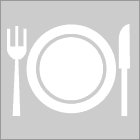Here's egg-xactly how to do it
"Ideas for dinner - Discover how to cook this recipe free. Ideas for dinner to cook a healthy recipe. Delicious idea for dinner. Cooking tips and food recipe. Easy and free recipe!"
Recipe by: gualhard
![]()
![]()
![]()
![]()
![]() Rate this recipe (5 votes)
Rate this recipe (5 votes)
370 people have saved this recipe
Main Ingredients:
See below ingredients and instructions of the recipe
Cooking Preparation of the Recipe:
No Ingredients Found
For years I thought that to make a custard or mousse you had to be a
magician. "Stir until thick enough to coat the back of a spoon"
conjured up images of a wooden handle draped in a trench coat. "Do
not allow it to boil or the eggs will curdle" caused ripples of
anxiety detectable by the Richter scale. Anxiety about custard is not
necessary. A custard sauce is merely egg yolks mixed with sugar,
perhaps a bit of salt, maybe some citrus juice or milk that is heated
until thick. The thick emulsion can be lightened with berry puree and
enriched with whipped cream to form a mousse, or it can be frozen to
make home-made ice cream. When egg yolks are heated, the egg proteins
coagulate by bonding into a fully solid mass. If the coagulated egg
proteins are left undisturbed, as with a baked custard, they form a
solid structure from what was once liquid. This is the tender Spanish
flan or Creole rice pudding. If you make the same mixture and keep
stirring it, it will become a creamy custard. the secret of the
properly thickened satiny custard is to start by whisking the egg
yolks in a heavy-bottomed saucepan until lightly colored. Add the
sugar a tablespoon at a time, beating well between each addition .
Beat until it reaches the thickness of a cake batter. Now it's time
to add the liquid. If the recipe calls for more then 1/2-cup of
liquid, start by heating the liquid until it begins to steam.
Otherwise you'll be stirring all day.If it's a small amount, the
temperature doesn't matter. Place the pan over low heat and use a
wooden spoon. Stir continuously. You'll know it's about done when you
poke it and see an occasional bit of steam rise. Then look at the
spoon's back. If it's coated thickly enough that you can draw a line
down the back of the spoon, it's done. The best way to anticipate
this moment is to take the custard's temperature. At 160F there is no
fear of salmonella bacteris, says the Meat and Poultry Hot Line of
the U.S. Dept. of Agriculture. At 160F you have achieved the proper
thickness. Baked custards are a snap. The only trick is to remember
to keep the heat low, and to keep the baking pan in a hot water bath,
called a "bain marie" in French. This aquatic insulation prevents the
eggs from heating too rapidly, which causes them to become tough, and
the custard to develop bubbles or possibly separate. For a baked
custard, do not beat the eggs too vigorously, or it causes bubbles in
the creamy pudding. From the Collection of Tia L. Darrow... Submitted
By SHARON STEVENS On 10-18-94
Browse by categories
Celebrity Chefs Recipes (cooking)
Joël Robuchon
(celebrity chef)
French celebrity chef. The "Chef of the Century" with 26 Michelin Guide Stars - the most of any chef in the world!

Paula Deen
(celebrity chef)
Award-winning television personality. The queen of fried foods and Southern cooking. Earnings: $9 million

Mario Batali
(celebrity chef)
Celebrity chef. Italian cuisine chef who owns 13 restaurants. Earnings: $3 million
Recipes free and delicious!
Salad recipes
Discover the best salad recipes with pictures: lettuce, tomato, etc...
Delicious and light salads!

Rice recipes
Discover the best rice recipes with pictures: risotto, basmati, brown rice. Try delicious rice free recipes.

Cheese recipes
Discover the best cheese recipes with pictures: cheesecake, fondue, pie, sandwich, appetizer, and more.









